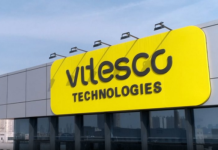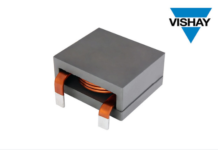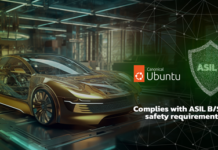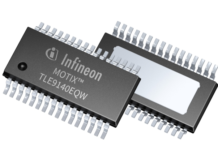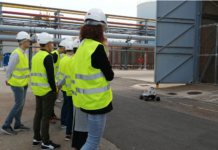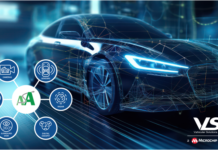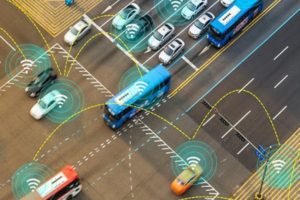
Read about V2X technology in a blog post by Mouser Electronics. The blog describes V2X technology infrastructure, its vision, type of Communications(Information Exchange) and use cases, V2X hardware building blocks, Brief History of V2X, technical issues associated with the V2X infrastructure and its early implementations.
Worldwide, there are over 1.2 billion vehicles on the road, and that number is expected to reach 2 billion by 2035. The electronic content of vehicles has been on an upward path, too; the typical luxury automobile now contains more than a hundred microcontrollers that are in charge of everything from the engine and transmission to the mirrors and headlights. In the midst of all this technology, one element is notably absent: The ability to exchange information with other vehicles.
Along with the increase in end-node devices, most applications have a corresponding increase in connectivity. Think of the smart home, Factory 4.0, or the tablet computer. Now we’re all connected whether we like it or not; however, 30 years after the invention of the smartphone, there’s still no way for one vehicle to communicate with other vehicles or its environment.
That’s changing, with the initial rollout of Vehicle-to-Everything (V2X) systems that enable an equipped vehicle to exchange data with other vehicles and its environment. A fully-realized V2X infrastructure will enable vehicles to communicate with multiple devices in real time. What is the V2X revolution, what is the technology underpinning it, and what can we expect over the next few years?
The V2X Vision and Expectations
The vision for V2X encompasses a broad and growing set of use cases based on four types of communication:
Vehicle-to-Vehicle (V2V): Alerts one vehicle to the presence of another
Vehicle-to-Infrastructure (V2I): Alerts vehicles to traffic lights, traffic congestion, road conditions, and the like
Vehicle-to-Pedestrian (V2P): Communicates with Vulnerable Road Users (VRUs) such as pedestrians and cyclists
Vehicle-to-Network (V2N): Communicates directly with a backend or the broader Internet
A vehicle with V2X will be able to do much more than just avoid accidents. Proposed use cases include:
- Real-time warnings based on road conditions: Do Not Pass Warning (DNPW), blind intersections, upcoming congestion, upcoming curves, and VRU alerts
- Emergency vehicle alerts
- Cooperative adaptive cruise control and platooning (operation in closely-spaced convoys to save fuel and ease congestion)
- Traffic signal status
- Optimal speed advisory
- Automated parkingIndirect benefits include increased time savings, increased productivity, reduced fuel consumption, and reduced pollution.
V2X Isn’t (Exactly) New
V2X has been a long time coming. In 1999, the U.S. Federal Communications Commission (FCC) designated the 5.85-05.925GHz frequency band for intelligent transport systems (ITS); Europe, Japan, China, and other countries have followed suit with a patchwork set of allocations in broadly the same frequency range.
Since then, however, progress toward V2X has been glacial. One reason is basic economics: V2X adds cost, and there is little incentive for a buyer to purchase a V2X-equipped vehicle in a world devoid of other equipped vehicles or roadside units. For instance, GM only announced the first V2V-equipped vehicle, the Cadillac CTS, this year. It can only communicate with other Cadillacs, and the number of roadside units is still vanishingly small.
The National Highway Traffic Safety Administration (NHTSA) would like to speed up V2X adoption: It recently proposed a rule that would require all new vehicles to have vehicle-to-vehicle (V2V) communication capabilities. The proposal may become an official requirement in 2019, with a phase-in goal of 100 percent compliance by 2023. Even so, it will take many years, perhaps decades, before the majority of vehicles will include this technology.
V2X Hardware Building Blocks
The proposed V2X hardware infrastructure has three components:
An onboard unit (OBU) in the vehicle communicates with other vehicles and roadside units via the dedicated short-range (DSRC) protocol: IEEE 802.11p, a variant of the 2.4GHz Wi-Fi specification running at 5.9GHz. At a minimum, units exchange basic safety messages (BSMs) that include data such as speed, brake status, and direction. Vehicles can link directly over short distances by forming a vehicular ad-hoc network (VANET). An application unit (AU) in the vehicle uses the OBU data to control vehicle functions such as braking or steering, or providing information to the driver.
The Roadside Unit (RSU) provides V2I communication between a vehicle and cloud servers. It provides information about road hazards or accidents and can also act as a repeater to increase the range of a VANET transceiver.
The Cloud component includes the application server and a traffic management server, as well as a server that manages system security. Analytics programs gather data from thousands of vehicles to help improve traffic flows and plan for future expansion. The Cloud also provides access to the vast range of V2N services, including GPS data, weather information, and perhaps even in-car entertainment and (of course) advertising.
A Key Roadblock: Security
Given the widespread publicity about security breaches in just about every other connected system, from banks to the Department of Defense (DOD), it’s not surprising that security is a major concern, especially because many existing in-vehicle networks were never designed from the ground up with security in mind. Automotive security experts have already demonstrated that it’s possible to take control of a vehicle remotely via the telematics system; therefore, it’s crucial to have a robust means of isolating real-time, safety-critical components in a vehicle from infotainment and similar applications.
As microcontrollers and applications proliferate, automobile manufacturers are trying to combine multiple functions into a single controller, complicating the security task. One solution is an embedded microprocessor running a microkernel that provides secure partitioning of the different software components. Intel has demonstrated such a solution by combining a 64-bit Atom N2000 or D2000 embedded processor with the INTEGRITY Multivisor. Together, they provide hardware-accelerated virtualization for near real-time transfer of control between protected applications and multiple “guest” operating systems, with secure partitions for fault tolerance. The Atom is available in numerous configurations with different feature sets: The N2800, for example, is a 64-bit dual-core device that runs at 1.86GHz.
Other Roadblocks
Security isn’t the only issue. There are also technical questions about the performance of the DSRC system and its potential for future expansion as the demands on it increase. Citing the already-installed cellular infrastructure, the wireless industry is lobbying for cellular LTE (Long Term Evolution) to be used for 5.9GHz V2X communications. Release 14 of the fifth-generation (5G) specification includes a provision for cellular-to-V2X communication (C-V2X).
Taking a wider view, liability is a concern of manufacturers, legislators, and insurance companies alike: What happens when things don’t go according to plan? Who is responsible for what? Other related concerns include privacy and the potential for increased government oversight and control. How will drivers react when they’re issued a ticket without fail each time they exceed the speed limit?
There’s also an active debate about whether the V2X system as currently proposed is even necessary. Many industry observers think that the government shouldn’t be trying to mandate any kind of “one size fits all” solution. It is far better, they say, to trust the future to autonomous vehicles, which can operate effectively without relying for a hugely expensive infrastructure that may never arrive.
Early Implementations
The first autonomous vehicles are already appearing. Tesla’s Autopilot is perhaps the most advanced: All Tesla vehicles include self-driving hardware such as 360-degree vision from eight surround cameras, object detection via twelve ultrasonic sensors, and forward-facing radar.
The Tesla requires drivers to be ready to assume control at a moment’s notice, but fully-autonomous vehicles are the ultimate goal, and manufacturers aren’t sitting on their hands. Ford, for example, is planning a high-volume fully autonomous ride-sharing vehicle by 2021, and BMW is partnering with Intel subsidiary Mobileye on similar programs.
Like any smart supplier, Intel isn’t placing all of its eggs in a single V2X basket. In addition to the collaboration with BWM, it also offers the GO™ development platform to help developers build, evaluate, and benchmark autonomous vehicle systems. There is a choice of platforms built around the company’s Atom or Xeon processors: Both platforms feature Intel’s Arria 10 Field-Programmable Gate Array (FPGAs) and include sample applications, libraries, and middleware. The Arria 10 is a family of high-performance and power-efficient FPGAs and systems-on-chip (SoCs) built on 20 nm process technology. The Arria 10 GX, for example, features 270,000 logic elements and 496 input/outputs (I/Os). It operates at 1.5GHz and runs on a supply voltage of only 900mV.

Conclusion
Communication between vehicles and the rest of the world has been a long time in development. Twenty years after the initial allocation of frequencies, the technical standards are mostly finalized, but substantial concerns remain, and a fully realized system is still many years in the future. Issues such as security, privacy, liability, and even need for V2X are still being considered. In the meantime, automakers have started implementing V2X solutions in small-scale applications, and further development of autonomous vehicles should continue offering hoped-for benefits.
For more such technologies visit: Mouser Electronics



